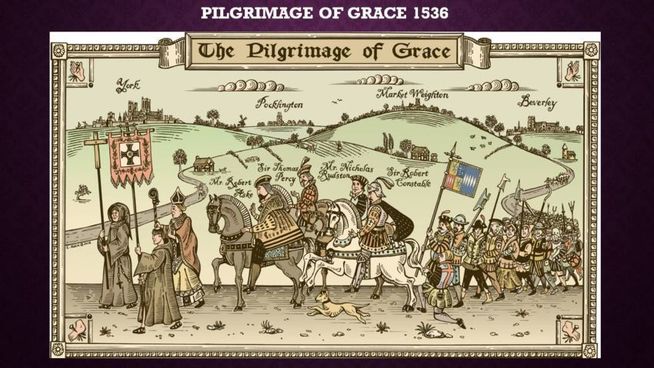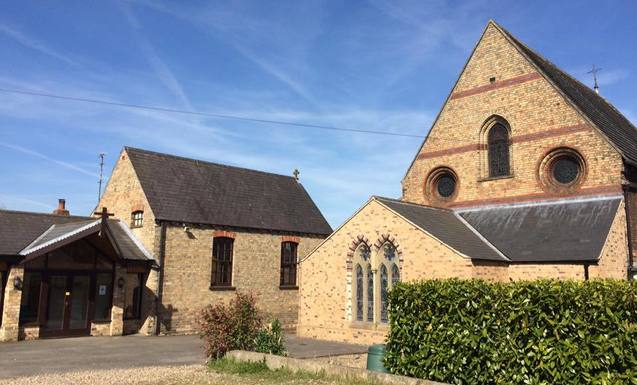Catholic Heritage
Pocklington's Catholic Heritage
(The following is a summary of the talk given by Phil Gilbank on this subject in February 2017)
Pocklington’s Roman Catholic heritage traces its roots to the first chapel on the site of SS Mary & Joseph’s church in the early 1800s; but goes back centuries before that. It includes Tudor martyrs; the decline of the town’s main families for clinging on to their faith; and some leading Catholic figures, including a Pocklington-born bishop who turned down approaches to be the country’s highest prelate.
The town has been a religious centre since Saxon times, when Pocklington was a large minster parish, sending out priests to say mass in a dozen surrounding villages. Papal records contain a handful of medieval documents relating to Pocklington and the church’s manor house in New Street in the 14th and 15th centuries.
The world changed when Henry VIII broke from Rome; and Pocklington went on to play a key part in the opposition to his reformation. Henry closed the nearby priories – there were five in the villages around Pocklington – and over the next half century townsfolk played leading roles in Tudor uprisings, with a dozen locals executed by the crown.

The Pilgrimage of Grace protesters camped here in 1536 as they tried to restore the monasteries, local knight Sir Robert Constable and two Augustinian canons from Warter Priory being executed in 1537. Others from Pocklington to die for the faith included Thomas Bishop, son of the Lord of the Manor, beheaded after the Rising of the Northern Earls fighting to put Mary Queen of Scots on Elizabeth I’s throne; and the Blessed Richard Langley, hanged for hiding priests underground in a secret Catholic mission station at Grimthorpe. Langley’s daughter, Isabel, a ‘martyr in chains’, was also arrested and starved to death in York prison. At times in the late 1500s and early 1600s, Pocklington School was the chosen educational establishment for leading Yorkshire Catholics, and some old boys from the school were also martyred.
Through the centuries Pocklington remained a Catholic outpost, citizens living dangerously and suffering financially for their beliefs. Their undercover activities continued and the local story includes involvement with the Gunpowder Plot (1605), then further arrests for treason later in the century.
The Dolmans’ adherence to ‘the old faith’ was instrumental in their decline from Pocklington’s richest family into poverty from 1650 to 1750. Numerous Pocklington people became Jesuit priests or Benedictine nuns in the 1600s and 1700s, often on the Continent where locals founded and supported Catholic priories.
The attitude of the authorities relaxed through the 18th century and Catholic services, but not churches, were allowed. Though now bankrupt, the Dolman family still had influence and two Dolmans signed a letter from 200 leading Catholic figures petitioning King George III in 1778 for the legal restoration of the Faith.
Pocklington’s shrinking Catholic community was initially served from the private chapel in the Constable family’s Everingham Hall, before Pocklington’s own Catholic mission led by French immigrant priests was founded in 1790.
The Everingham family, now Maxwell-Constable, bought land in London Street in 1805 and the first small chapel was established. The congregation was boosted with the arrival of workers from Ireland in the mid-19th century, prompting the construction of the current building on the same site.
Pocklington also produced a major church figure in the 19th century. William Ullathorne, born in the Market Place in 1806, was a Catholic priest within the Australian penal colonies. Made Vicar-General of Australia, then Bishop of Birmingham on his return home, he led the campaigns to end the transportation of convicts, and later corporal punishment. He was regularly consulted by the Vatican on church matters in England and Australia, but shunned appointment to even higher office. He came back to Pocklington to preach the opening sermon in the new church, and reminisce about Easter Catholic gatherings on Chapel Hill around the ancient holy well there.
Today’s SS Mary & Joseph church may date back to its rebuilding in 1864, but itclearly stands on historic and venerable foundations.
